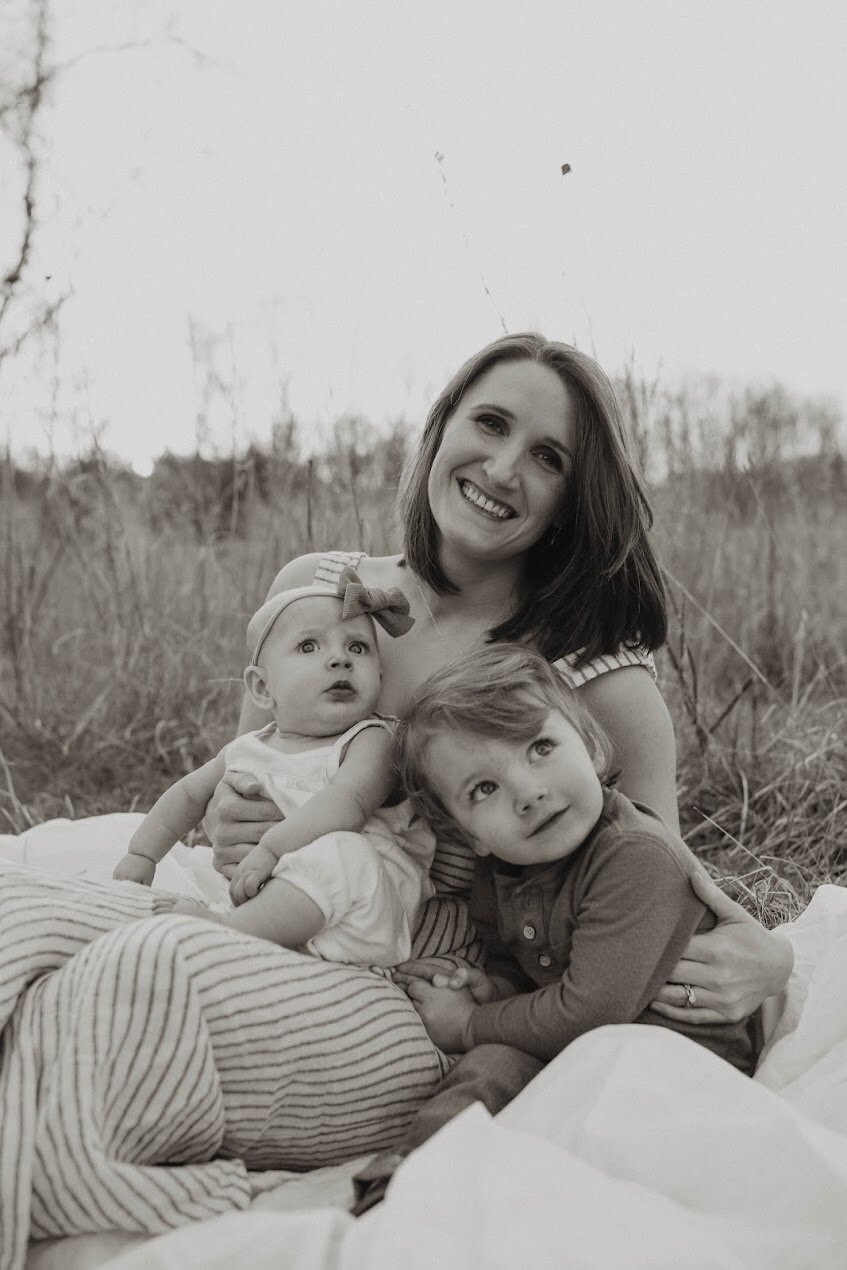Hi, I’m Samantha.
Wife, Mom, Pediatric Occupational Therapist
Master of Occupational Therapy from Maryville University
I became an occupational therapist because of my little brother who was diagnosed with autism at 4 years old. I know what it’s like to grow up in a family with an exceptional child. I know it can be extremely difficult, comes with decisions that no parent is prepared to make, is stressful on marriages, and yet simultaneously brings immeasurable joy. I know what it’s like to do a happy dance over small victories and can’t imagine a life without disability being a part of it. I wouldn’t want to.
My goal is to make the journey easier, to come alongside families and provide support for everyone involved. I want to walk with each family in a way that empowers the child to believe in their own abilities and caregivers to support their child as they grow.
“Some children communicate with words, but ALL children communicate with behavior. If we’re only treating “bad” behavior as a negative attribute to be fixed, we’re not truly listening.”
My Approach
Sensory Integrative
The information we take in through our senses determines our view and understanding of the world and our environment, whether it’s safe, hot, cold, loud, quiet, etc. However, once that information is taken in through the senses, our brain must interpret the information and produce a response. If our brain is unable to properly interpret the information coming in, we are then unable to produce a functional response. Children’s brains may interpret things as dangerous that aren’t (such as loud noises), or some may be under-responsive to the input. This inability to process the world around them can impact coordination, strength, balance, emotional control, social skills, coping skills, and many other areas. When you use all of your energy and brain power to simply live and tolerate your environment, it leaves very little for much else. By teaching the brain to process input more effectively, we can free up some of that energy and power for better things, like playing and learning.
Child and Family-Centered
My goal is to ensure that each child has the tools they need in order to thrive in their day-to-day. To do this, I consider the whole child, who they are and not just what they can or cannot do. I also consider their roles and their natural environments to determine factors that could be helping or hindering their success. I follow this with education for caregivers, teachers, and anyone else in a position to support the child. Two sessions a week must be followed by strategies and techniques implemented in the home, school, and other natural environments in order to be the most effective, so supporting the family is imperative. This will look different for everyone but treatment of the child must always extend to the family. I want to help each child thrive and send them home with empowered and equipped caregivers.
Attachment Focused
Attachment is that sense of closeness and dependence we feel in our relationships and it is essential for children to experience a secure attachment with their parents/caregivers. What many don’t realize is that, while it is first established in-utero, then further in infancy, the need for attachment is ongoing, and establishing attachment is a continuous process. Incorporating activities that encourage attachment and connection has significantly improved outcomes for the children and families I have served.
Trauma Informed
The way a therapist approaches a child with a background of trauma HAS to look different than the “typical” approach. Sorting through various sensory triggers in addition to trauma triggers while navigating treatment is a delicate process that requires a high level of rapport with the child, skill, and patience for everyone involved. These children are MORE than their trauma. As is true with all of us, our lives, the things that happen to us and around us, help shape how we view the world and the people in it. With trauma-informed therapy, we hope to make that view one of safety and trust.
Holistic
A child is more than a diagnosis, although diagnoses are nothing to be ashamed of. I don’t want to fix these children because they are not broken. I simply want to help families who need help working through the aspects of life that are more difficult due to certain diagnoses or various concerns, discover how to best thrive within the life they’ve been given. To do this, we have to see the child for who they are and determine underlying causes for the difficulties they’re experiencing, rather than just treating symptoms. In addition to seeing the child, we have to hear them. Some children tell us what’s going on with words, but ALL children communicate with behavior, so deciphering behavior can help us to better understand the child and, in turn, truly be able to help.
